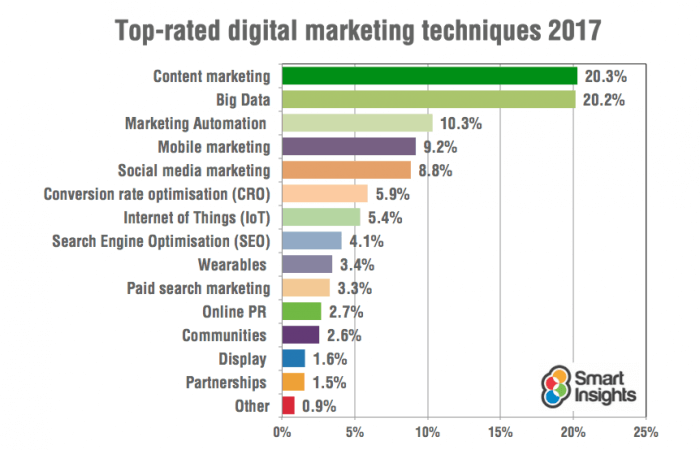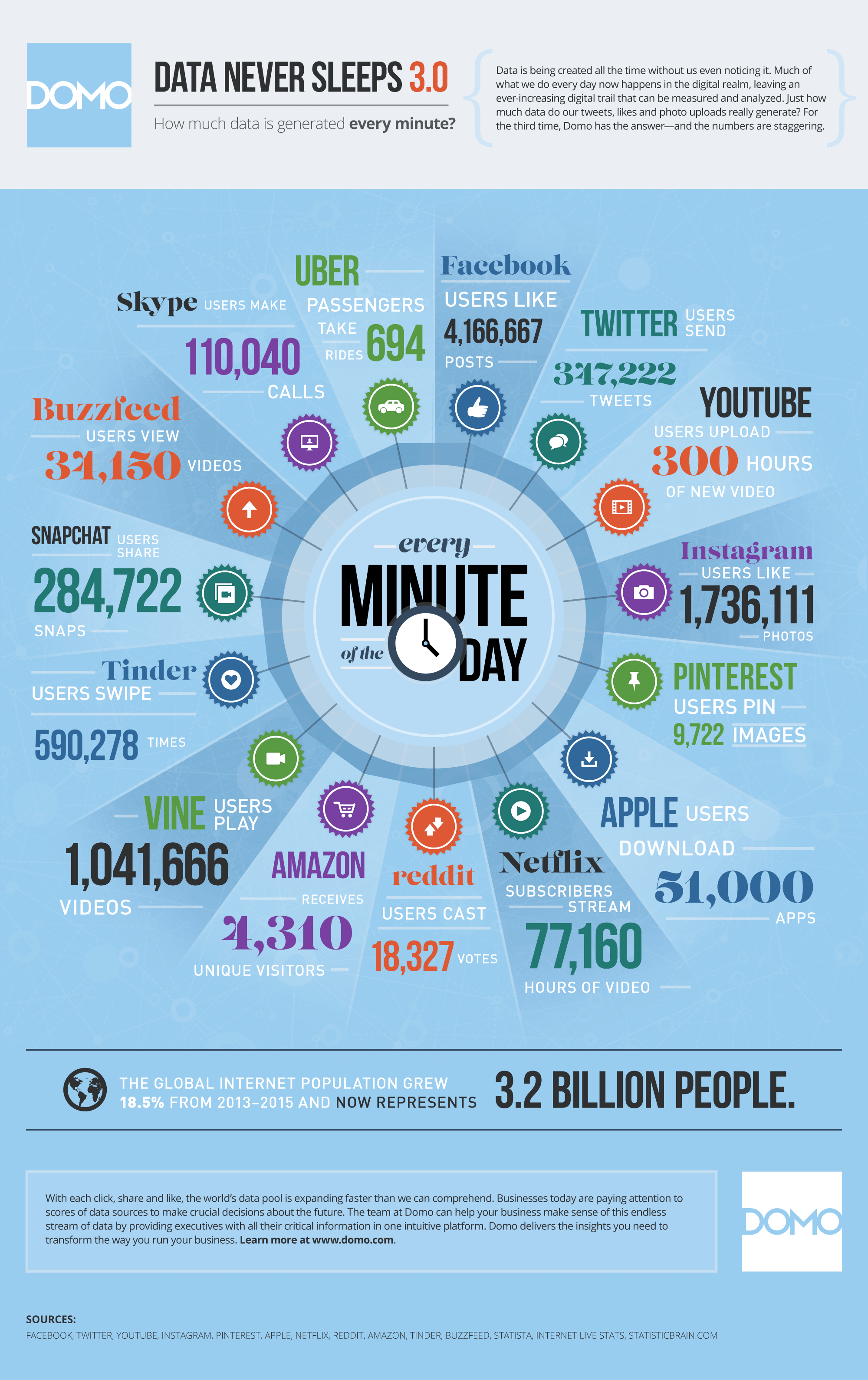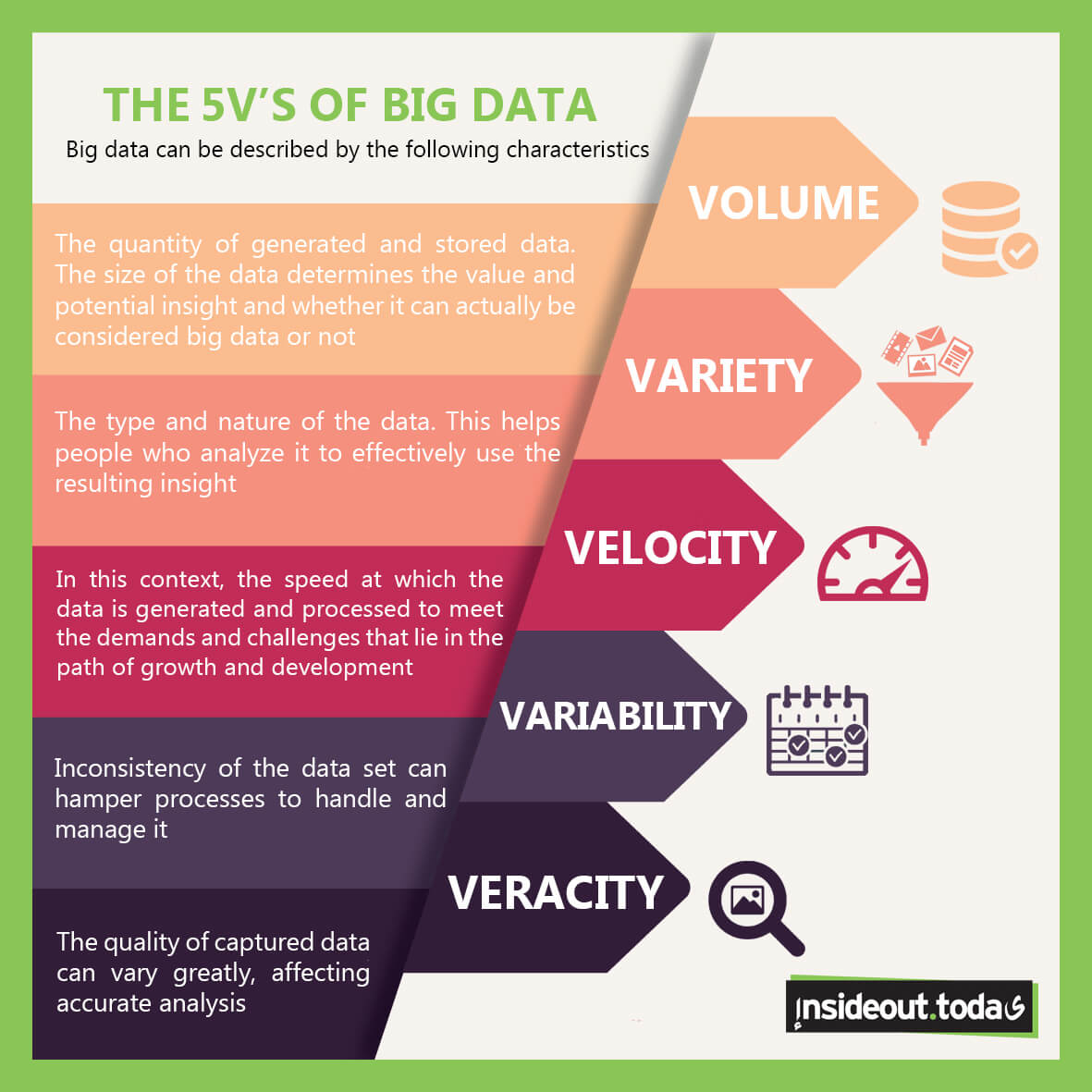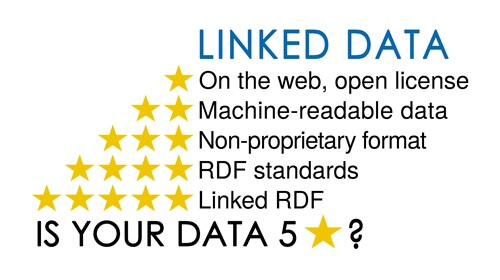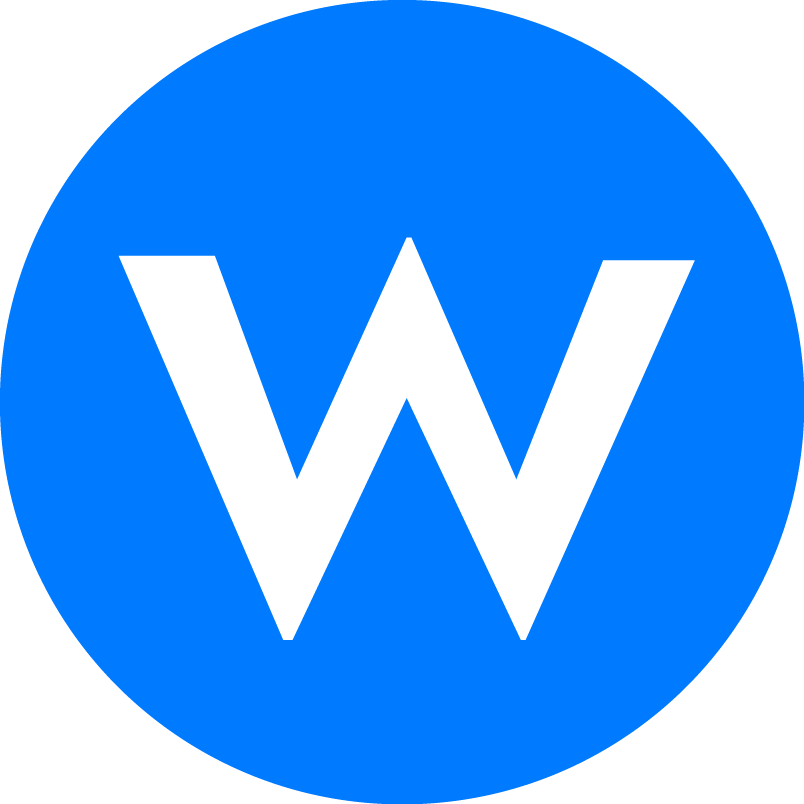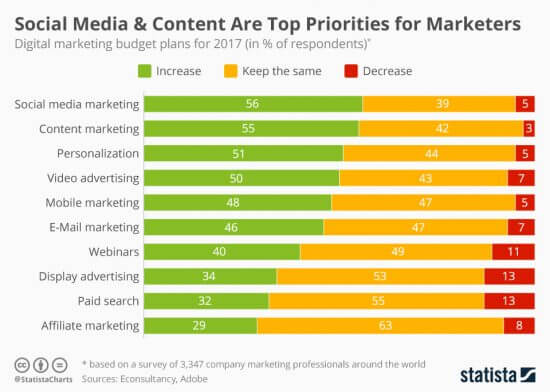Big Data provides a new paradigm for Data-Driven marketing
The amount of content published daily on the web has caused a free flow of information that 1 billion websites have to compete directly for business, bringing targeted content at lower prices. At the same time, web content needs to be highly curated and organized to get online readers’ attention and trust and serve them at the speed they want.
Data Never Sleeps
These numbers are increasing every day, every minute and every second
With all the data generated on the Internet, it’s a must to pay attention to the opportunities that data could bring…
Big Data and Content Marketing Go Together
The adoption of big data should be focused upon delivering measurable business value: from big data to actionable data, by constantly using data and adopting a data-led culture, you may be able to make a significant change for the better in your content marketing efforts
Open data to simplify and democratize the big data
While big data is defined by size, open data is defined by its use. Big data is the term used to describe very large, complex, rapidly-changing data-sets
Open data is accessible public data that people, companies, and organizations can use to launch new ventures, analyze patterns and trends, make data-driven decisions, and solve complex problems
The web has evolved “from web of pages to web of data”, Computers understand the meaning of what we publish on the web.
The Semantic Web isn’t just about putting data on the web. It is about making links so that a person or machine can explore the web of data. With linked data, when you have some of it, you can find other related data.
Is your Linked Open Data 5 Star?
- Linked data is essential to actually connect the semantic web, having data correctly formatted can allow you to create valuable insights.</li>
- Content classification enables content discovery and creates alternatives entry points and routes for contents
- When using structured content it is easier to find what you’re looking for, as content is organized and linked to other relevant and related content.
- When you understand your audience in a data-driven way, you then have the tools available to improve services to them.
Open data creates new business models that didn’t exist before Open data puts content in a creative context and links your data to the wider world. learn here about the Linked open data project for Enel Electrified Vehicle charging Network and how it created a new business model
With data fully integrated, and a roadmap in place, brands will definitely benefit from their content marketing
So Where to start?
As Your website is the foundation of your digital presence, the semantic web can be a powerful force for your website’s SEO and user experience. However, to truly harness its potential, you need the right semantic web tools
Adding semantic markup to connect your content to your entities is the basic building block of the semantic web.
we advice you to build your own dataset using WordPress, there are plenty of content management systems out there in the web, but wordpress remains number 1 CMS
Why use WordPress for your website:
- WordPress is Compatible With the Web It’s open source
- WordPress is free and the majority of its plugins is free, it has thousands of themes and plugins
- WordPress is a constantly-evolving platform with an enormous community, Wordpress support page has a forum for everything you can think of, from fixing WordPress issues to accessibility concerns
- It’s also easy to create a website that has a blog without having two different platforms that need to work together.
Learn more about WordPress benefits
How to Migrate your website to Wordpress:
Migrating a website (including the design) over to WordPress is actually easier than you might think you can find here a full guide here on how to migrate your website to wordpress
And now how to structure content on WordPress using open data technology such as Wordlift
WordLift, by Insideout group, is content analysis and recommendation tool for WordPress. It is a tool for publishers, newspapers and magazines to organize their content in a meaningful way, expose it better to search engines, boost their user base, website traffic, advertising and above all user experience and accordingly revenues.
Wordlift adds semantics annotations and combines information publicly available as linked open data to support editorial workflow.
If it is hard to know where to begin we can help you here
Case studies
TaoRoma is the blog of an association whose goal is to promote and introduce martial and taoist arts into our hectic daily life. Using WordLift they have structured the content of their blog, just so that it does what they created it for: showing organized content that would be relevant to readers. While creating and taking care of entities they have built their own encyclopedia. And it works just great!

